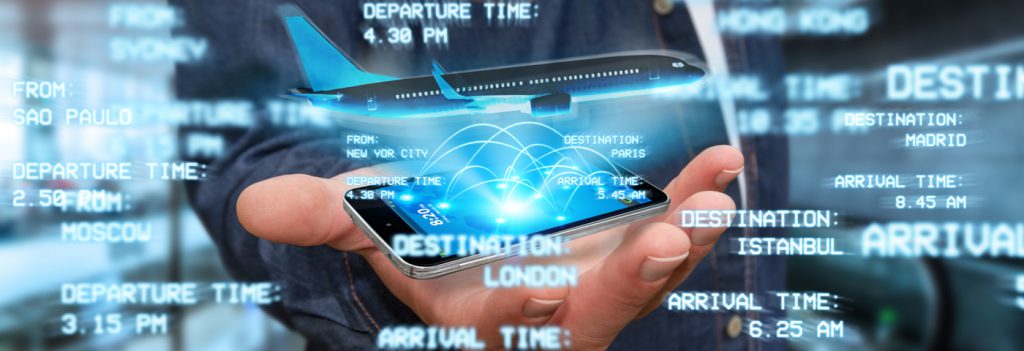* By Adriana Cavalcanti
The aviation market is constantly evolving. Whether it is focusing on transporting leisure passengers or events and business passengers, the transformation is fast and constant. Today, in a quick tour by the main domestic and international airlines, it is possible to identify an increasingly common factor: the importance that technology plays in a positive experience of the service offered by the airline.
The companies think of differentiated services that can improve the customer’s experience, whatever his or her age. For example, in VIP lounges one can find kids’ spaces developed in order that families have an area for leisure and fun for the children, while they are waiting to board. In addition, many companies have developed special menus and interactive channels with entertainment content for children during the flight.
However, it is in relation to the corporate public that we see a major shift on the part of the airlines so that these travellers increasingly have access to services that may go beyond a tranquil and safe flight, en-route to business meetings and professional commitments. Here, over and above the experience, there are the technological facilities that the companies have developed in order to provide accurate and real-time information.
For example, the applications developed by the airlines, enable passengers – who nowadays have a much more digital and multichannel profile – to get information about the flight, the flow of traffic en-route to the airport, as well as to check out and select the on-board menu or check the information about the films that will be available during the flight, with just a single touch.
The online check-in feature is another factor that facilitates the lives of these travellers, who spend a significant amount of time in the process of waiting between boarding or for a connecting flight. Although the airlines are looking for alternative ways to speed up and improve the procedures for boarding or disembarking, see the VIP lounges, which we will be talking about further on, there is also a very sensitive question in relation to the infrastructure of certain airports: notwithstanding the whole technological revolution and changes in consumer behaviour, bureaucratic formalities oblige the traveller to wait for hours before boarding, for example, which results in a certain degree of inactivity.
However, at this point it should be stressed that the security of the airport environment and of flights will always prevail. Therefore, companies bow to this requirement on the part of the authorities, receiving the traveller up to three hours beforehand (or even more, in some cases).
The long wait for boarding and for connecting flights brings us to the reality of VIP lounges. Formerly, reserved for executives and Premium passengers, nowadays they receive this public with personalized services. Examples of this are VIP lounges that include gyms, cinemas, wellness and massage areas, meeting rooms, environments for taking a nap, having a bath and food services for those who prefer to sleep during the flight and who have a meal before boarding. In addition, there are even golf simulators and pools.
The new habits of business travellers, which have intensified since 2016, drive the tourism market on land with the proposal of Bleisure (Business + Leisure). Having become more demanding over the years, these passengers have a very extensive range of benefits and options. We see a constant effort on the part of companies to offer differentiated products at a price that is better suited to companies’ travel budgets, for example, an intermediate Economy class (or Economy Premium), services and amenities that add value, comfort and, in addition to good experiences, unusual tasting sessions.
But bleisure also has an impact on aircraft occupancy levels. According to a study published by the Global Travel Market Research Company Phocuswright, 64% of corporate travellers extend the number of days they travel and stay at the destinations they visit for up to four days, while 60% of these travellers extend their trips accompanied by another person.
It is no surprise that major business centres like New York, Boston and the city of São Paulo itself, run aggressive campaigns aimed at this public, encouraging the practice.
Adapting, innovating and working to meet these new demands requires continuous careful attention. In China, for example, it is already possible to pay for tickets with QR-Code. Artificial intelligence furnishes information about the trip, strikes that may affect the flight time, meteorological occurrences along with other information, all in real time. And what will happen to the Blockchains? There is still no study that provides any figures regarding this reality. However, purchases of products and services by means of digital currencies will be a reality in just a short space of time, in the same way as mileage programs.
Looking ahead and catching a glimpse of the opportunities is a crucial element in this process of breakthroughs and progress together with the customers. Airlines are doing their homework with interesting and relevant actions directed at the different audiences and at a speed that is compatible with the technology that surrounds the segment.
* Adriana Cavalcanti is the President of WTM Latin America’s Advisory Board and has worked for more than 30 years in the commercial aviation market
